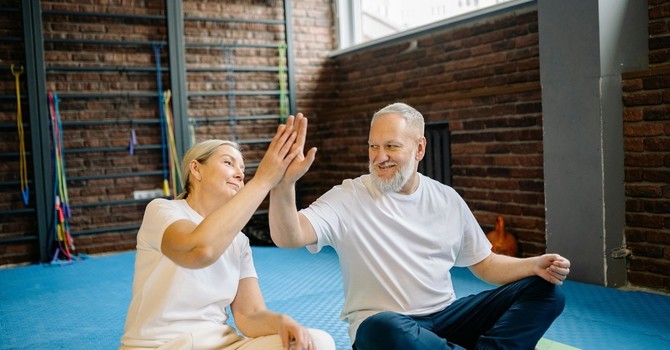Understanding the Core Principles of Active Release Technique
Active Release Technique, often abbreviated as A.R.T., is a hands-on, manual therapy approach that targets muscles, tendons, ligaments, and nerves affected by overuse, scar tissue, or repetitive strain. Unlike some traditional soft tissue therapy methods that rely on generic pressure or passive stretching, A.R.T. involves a more dynamic process. The practitioner applies targeted pressure while guiding the injured area through a specific range of motion, working to break down adhesions and restore normal function. This combination of movement and applied tension is what sets A.R.T. apart from other modalities and contributes to the benefits of Active Release Technique.
In the world of sports injury rehabilitation, where athletes continually push their limits and risk overuse injuries, understanding how A.R.T. works can make a difference. Rather than focusing solely on temporary comfort, A.R.T. aims to address underlying restrictions in the tissues. Over time, repetitive movements and intense training sessions can lead to the development of adhesions—bands of scar-like tissue that form between muscles or within tendons. These adhesions restrict mobility, reduce blood flow, and provoke discomfort, all of which impede performance and prolong recovery.
A.R.T. for Sports Injuries: Who Can Benefit?
A.R.T. for sports injuries is widely embraced by athletes across different disciplines—runners, swimmers, cyclists, weightlifters, and team sport players. It can be particularly helpful for conditions that arise from repetitive strain. Common examples include shoulder impingements in swimmers, Achilles tendon issues in runners, or tennis elbow in racket sport enthusiasts.
During a typical sports training cycle, many athletes experience subtle pain or tightness that may not require dramatic interventions but still hinders peak performance. A.R.T. practitioners understand that even minor adhesions can alter biomechanics. By addressing these issues proactively, athletes may maintain more fluid movements, minimize the risk of escalating discomfort, and potentially return to normal routines sooner. This manual therapy approach helps restore proper alignment, allowing joints and tissues to move without unnecessary friction.
The range of sports injuries that can respond positively to Active Release Technique is extensive. Below is one comprehensive list that highlights common conditions where A.R.T. is often integrated into rehabilitation plans:
- Runner’s knee and iliotibial (IT) band syndrome
- Plantar fasciitis and Achilles tendon tightness
- Rotator cuff strains and shoulder impingement
- Tennis elbow and golfer’s elbow (forearm extensor and flexor issues)
- Hamstring strains and adductor tightness
- Lower back discomfort and restricted hip mobility
By focusing on these and other injuries, A.R.T. supports athletes looking to restore full range of motion and comfort. Facilities like Summit Sports and Spine’s chiropractic services often incorporate A.R.T. as part of a broader toolkit to improve outcomes and enhance the overall rehabilitation experience.
Unpacking the Science Behind Active Release Technique
While A.R.T. has gained popularity, understanding the science behind it helps solidify its role in sports injury rehabilitation. Research suggests that manual therapy approaches like A.R.T. can support increased flexibility, reduced discomfort, and improved circulation in targeted areas. A 2015 study in the Journal of Manipulative and Physiological Therapeutics found that manual therapy methods applied to affected soft tissues improved range of motion and reduced tenderness in participants with musculoskeletal conditions (Hyland et al., 2015).
Another key point is how A.R.T. can influence proprioception—the body’s awareness of position and movement. By restoring normal tissue elasticity and function, Active Release Technique may help the nervous system recalibrate, promoting smoother, more coordinated movements. This recalibration is vital not only for overcoming current injuries but also for potentially reducing the likelihood of future issues.
Sports medicine professionals often highlight A.R.T.’s value in breaking the cycle of chronic tissue damage. According to Dr. Michael Leahy, the creator of A.R.T., this technique focuses on identifying and correcting abnormal tissue densities, which can impede nerve function and optimal biomechanics. By methodically tackling each adhesion, practitioners aim to free up compressed structures, ultimately allowing muscles and joints to move as intended.
The Benefits of Active Release Technique in Rehabilitation
The benefits of Active Release Technique extend beyond temporary relief. Athletes who integrate A.R.T. into their rehabilitation routine may experience a range of advantages, from quicker return-to-play timelines to improved athletic longevity.
One key benefit of A.R.T. is that it empowers practitioners to deliver targeted interventions. Instead of applying generic pressure to entire muscle groups, they pinpoint specific lesions, working directly on adhesions that limit mobility. This level of precision can accelerate progress, allowing athletes to reclaim lost range of motion and enhanced comfort more efficiently.
Another advantage is improved blood flow in the affected tissues. Adhesions and scar tissue can restrict circulation, slowing the delivery of nutrients and oxygen vital for tissue repair. By breaking down these barriers, A.R.T. supports a healthier environment for tissue remodeling and resilience.
Additionally, A.R.T. aligns with a more holistic approach to recovery. Rather than just focusing on symptom management, it targets underlying mechanical issues. A runner dealing with Achilles tendon strain, for example, might find that A.R.T. on calf muscles and surrounding structures reduces tension and enhances stride mechanics. Over time, this may lead to fewer flare-ups and better overall performance. Comprehensive clinics like Summit Sports and Spine’s services often integrate A.R.T. alongside other modalities, ensuring a well-rounded approach to rehabilitation and performance maintenance.
What to Expect During an A.R.T. Session
Walking into an A.R.T. session for the first time can raise questions about comfort and effectiveness. Athletes might wonder if Active Release Technique is painful, how long sessions last, or if they need multiple treatments. In a typical A.R.T. session, the practitioner begins by evaluating the area of concern. They may ask about recent training volume, previous injuries, and any lifestyle factors that could affect recovery. This interview helps them identify patterns and potential sources of restriction.
Once the practitioner zeroes in on the affected tissues, they apply precise pressure while guiding the limb or joint through a specific range of motion. The athlete remains an active participant, sometimes instructed to move through gentle stretches or contractions that complement the practitioner’s applied tension. The combination of touch and movement can occasionally produce mild discomfort, often described as a “productive sensation” rather than severe pain. The pressure is adjusted as necessary to remain within a tolerable threshold.
Each session may last anywhere from 15 to 30 minutes, depending on the complexity of the issue. More persistent or long-standing problems may require multiple appointments to fully address the underlying adhesions. By the end of the process, athletes often report feeling a sense of release or increased suppleness in the targeted tissues.
Integrating A.R.T. Into a Comprehensive Recovery Plan
A.R.T. does not function in isolation. Its greatest power emerges when integrated alongside strength training, proper rest, and other manual therapy approaches. In many rehab scenarios, practitioners pair Active Release Technique with corrective exercises to reinforce the newfound range of motion. For instance, after addressing calf adhesions for a runner, introducing targeted strengthening drills can help maintain the improvements achieved.
Attention to overall conditioning and lifestyle adjustments amplifies the benefits of Active Release Technique. Ensuring balanced nutrition, hydration, and adequate sleep can all support tissue health. Engaging in a structured warm-up and cool-down routine before and after training also plays a role in preventing the recurrence of adhesions. Mindful training volume and cross-training can reduce repetitive stress on the same muscle groups, lowering the likelihood of future flare-ups.
Consulting a qualified practitioner who understands both the mechanics of A.R.T. and the nuances of athletic performance is crucial. Collaborating with a skilled provider who can tailor sessions to your needs increases the chances of long-term improvement. Summit Sports and Spine acknowledges the importance of this tailored approach, often recommending Active Release Technique as part of a larger, person-specific plan that might also include chiropractic adjustments, guided exercises, or other rehabilitative treatments.
Research and Expert Insights on A.R.T.
Sports medicine professionals frequently underscore the value of incorporating A.R.T. into an athlete’s rehab program. While more comprehensive, large-scale studies could further solidify the technique’s status, existing literature and clinical practice experiences offer encouraging feedback. In a 2014 article in the Journal of Bodywork and Movement Therapies, researchers noted that manual therapy methods similar to A.R.T. contributed to reduced musculoskeletal discomfort and improved mobility in athletes recovering from chronic issues (Morton et al., 2014).
Dr. Chris Oswald, a chiropractor and A.R.T. practitioner, often emphasizes that addressing soft tissue restrictions can be a game-changer for athletes reaching performance plateaus. “When you free muscles and tendons from adhesions,” he states in an interview, “you restore natural mechanics. This can support improved athletic function and lessen the long-term strain on the body” (Oswald, 2018). Such insights reflect a growing appreciation for how subtle changes at the tissue level can influence overall performance and durability.
Frequently Asked Questions (FAQ)
How does A.R.T. help with sports injuries?
A.R.T. addresses adhesions and scar tissue that build up in muscles and connective tissues due to repetitive movements or minor traumas. By applying targeted pressure while moving the affected area, A.R.T. supports improved circulation, reduced tension, and restoration of normal range of motion.
Is Active Release Technique backed by research?
While more research is always welcomed, existing studies suggest that A.R.T. and similar soft tissue therapy methods help improve flexibility, reduce discomfort, and enhance function. Clinical experiences and practitioner reports further support its value in sports injury rehabilitation.
Can A.R.T. speed up rehabilitation from common injuries?
It often can. By directly addressing the mechanical restrictions that slow recovery, A.R.T. may streamline the rehabilitation process, allowing athletes to return to training sooner. Combined with strengthening exercises and proper rest, it can enhance the efficiency of a rehab program.
How often should I receive soft tissue therapy during recovery?
This varies depending on the nature and severity of the injury. Some athletes benefit from weekly sessions during the initial recovery phase, gradually tapering off as they regain normal function. A practitioner familiar with your situation can help schedule sessions to maximize benefits.
Is Active Release Technique painful, and what can I expect during a session?
A.R.T. may cause mild discomfort, especially when pressure is applied to areas with built-up tension. However, most describe it as manageable and productive, rather than outright painful. Communication with the practitioner is crucial; they can adjust pressure levels to keep you comfortable.
Moving Forward With A.R.T. in Your Rehab Journey
Active Release Technique represents an opportunity for athletes and active individuals to go beyond surface-level interventions. By targeting adhesions, restoring tissue function, and facilitating more natural movement, A.R.T. can support both short-term relief and long-term resiliency. When combined with a well-structured training program, proper rest, and other forms of manual therapy approach, the benefits of Active Release Technique become even more apparent.
Sports injury rehabilitation is rarely a one-size-fits-all path. Exploring A.R.T. and integrating it into a thoughtful plan may offer a new perspective on recovering strength, speed, and comfort. Considering how this technique fits into a broader rehabilitation strategy, and working closely with skilled practitioners at places like Summit Sports and Spine, can encourage steady progress. Over time, as muscles regain their intended function, athletes may find themselves better equipped to push boundaries, avoid setbacks, and enjoy activities with greater confidence.
The content in this blog is for informational purposes only and is not a substitute for professional medical advice, diagnosis, or treatment. Always consult your doctor or a qualified healthcare provider before trying new healthcare protocols.



